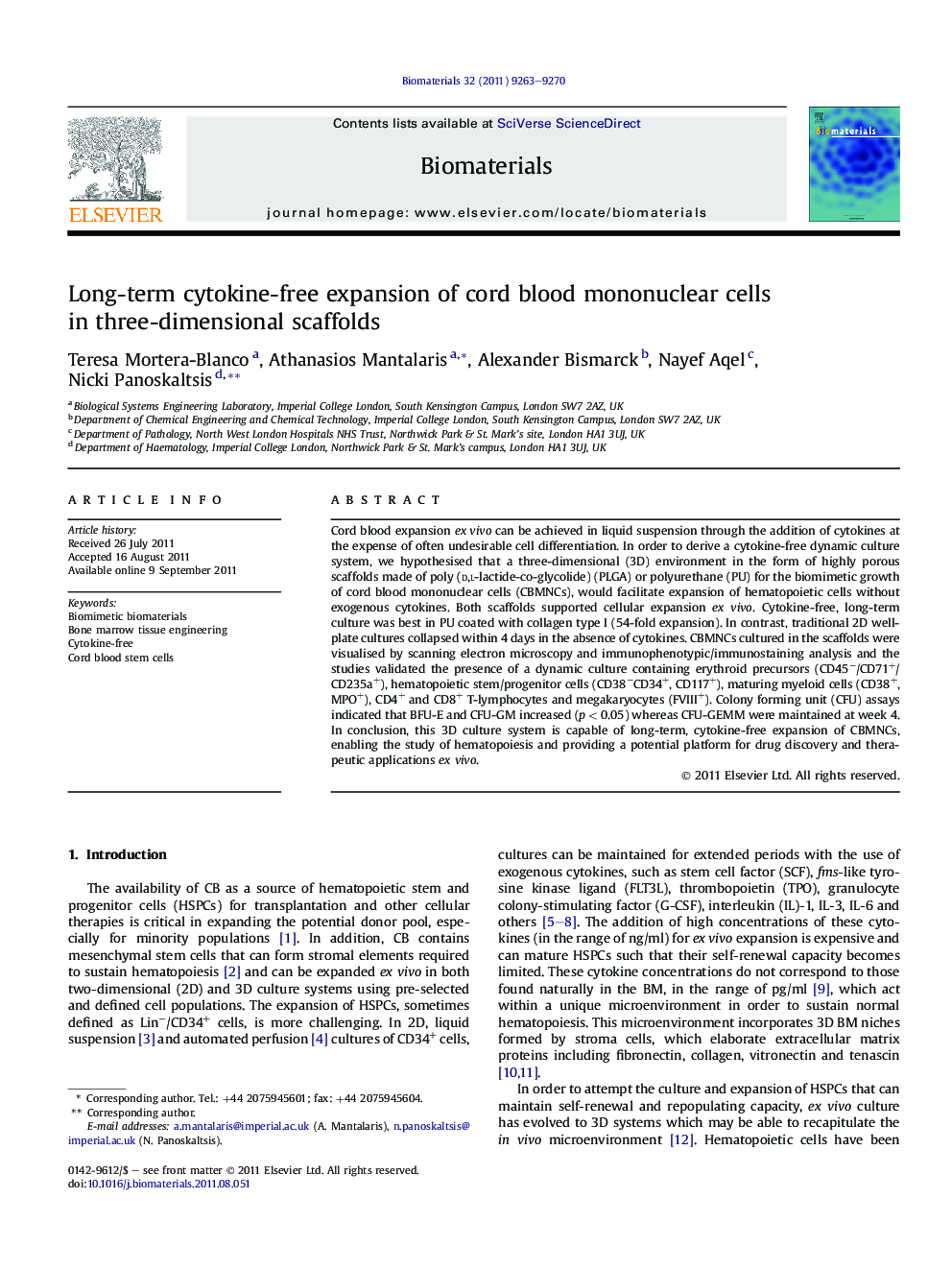| Article ID | Journal | Published Year | Pages | File Type |
|---|---|---|---|---|
| 7879 | Biomaterials | 2011 | 8 Pages |
Cord blood expansion ex vivo can be achieved in liquid suspension through the addition of cytokines at the expense of often undesirable cell differentiation. In order to derive a cytokine-free dynamic culture system, we hypothesised that a three-dimensional (3D) environment in the form of highly porous scaffolds made of poly (d,l-lactide-co-glycolide) (PLGA) or polyurethane (PU) for the biomimetic growth of cord blood mononuclear cells (CBMNCs), would facilitate expansion of hematopoietic cells without exogenous cytokines. Both scaffolds supported cellular expansion ex vivo. Cytokine-free, long-term culture was best in PU coated with collagen type I (54-fold expansion). In contrast, traditional 2D well-plate cultures collapsed within 4 days in the absence of cytokines. CBMNCs cultured in the scaffolds were visualised by scanning electron microscopy and immunophenotypic/immunostaining analysis and the studies validated the presence of a dynamic culture containing erythroid precursors (CD45−/CD71+/CD235a+), hematopoietic stem/progenitor cells (CD38−CD34+, CD117+), maturing myeloid cells (CD38+, MPO+), CD4+ and CD8+ T-lymphocytes and megakaryocytes (FVIII+). Colony forming unit (CFU) assays indicated that BFU-E and CFU-GM increased (p < 0.05) whereas CFU-GEMM were maintained at week 4. In conclusion, this 3D culture system is capable of long-term, cytokine-free expansion of CBMNCs, enabling the study of hematopoiesis and providing a potential platform for drug discovery and therapeutic applications ex vivo.
